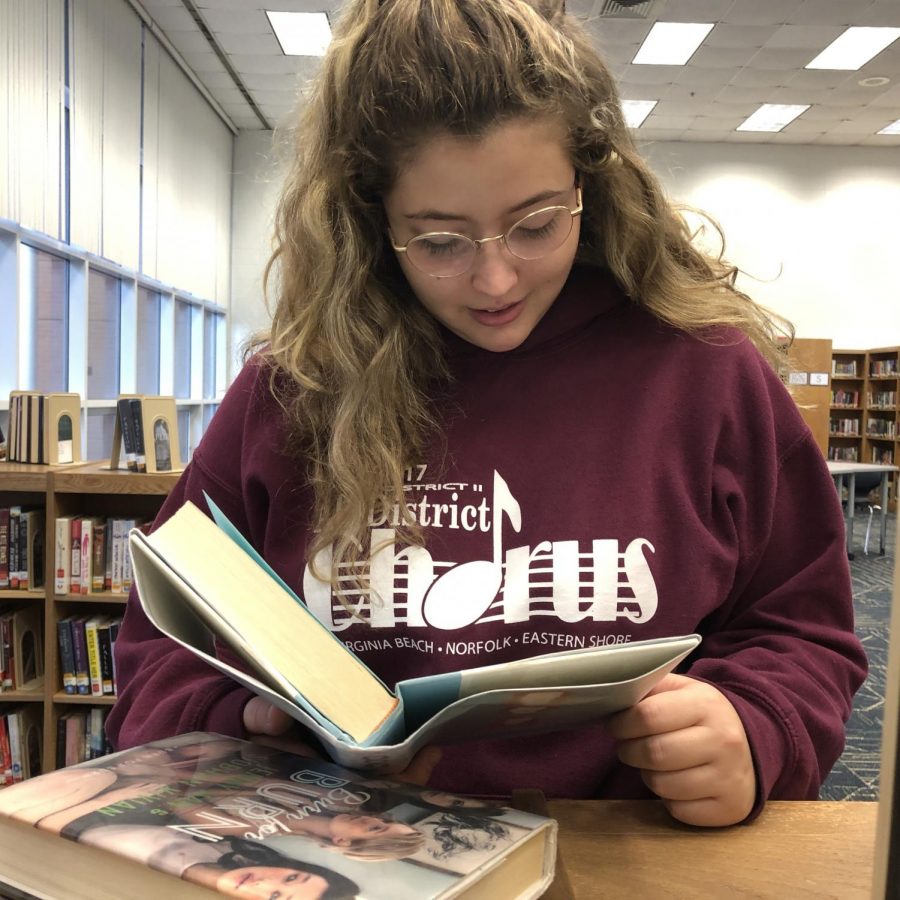Reading, a lost art
A timeless activity overshadowed by the distraction of technology
Junior Emma Gorman reads in the library on Nov. 21 during 1B.
November 30, 2018
With the push of technological advancements, reading, a perennial activity with multiple benefits, is gradually and wrongfully being pushed aside.
According to startling research done by the American Psychological Association, no more than 20% of teenagers say they have read a magazine, newspaper, or book for pleasure daily. The other 80% claim to use social media everyday instead.
Statistics like these shove an alarming truth into the faces of teachers and parents alike: their kids are spending less and less time reading. Endless, wasted hours spent on smartphones, laptops, and other devices reading texts, captions on social media, or maybe even subtitles leave students ill-prepared for the grueling textbooks they will face in college.
According to best-books-for-kids.com, reading helps students develop critical thinking skills and improves their ability to analyze literary texts. It also expands a student’s vocabulary, this leads to the development of better language skills. Ignoring benefits like these is absolutely laughable, especially when the replacement for reading, technology, doesn’t have them.
How are students to develop these skills before college? Certainly not by using their “smart” phones.
However, factors outside of technology, like homework and extracurricular activities, keep students away from reading. Homework and extracurriculars are undoubtedly important and take up a great deal of time out of a student’s day. According to the Bureau of Labor Statistics, the average American high school students spend 1.4 hours every weekday solely on extracurricular activities. 1.4 hours of extracurriculars on top of the time spent completing homework does not leave a lot of time for reading, making the inability to read understandable.
An obvious solution would be to encourage students to read more.
Albeit, instead of nudging them with the idea of reading more, suggesting edgy books that coalesce with prominent issues in today’s society may prove to be more efficient. Examples might include books like “The Hate U Give” by Angie Thomas, or “The Perks of Being a Wallflower” by Stephen Chbosky. It would be difficult for a student to want to read something they have no interest in, so edgy topics might capture their interest.


